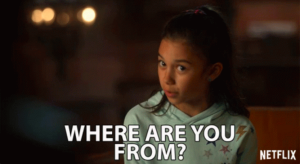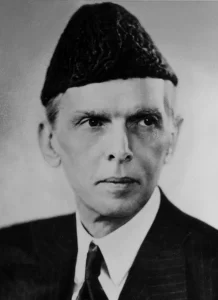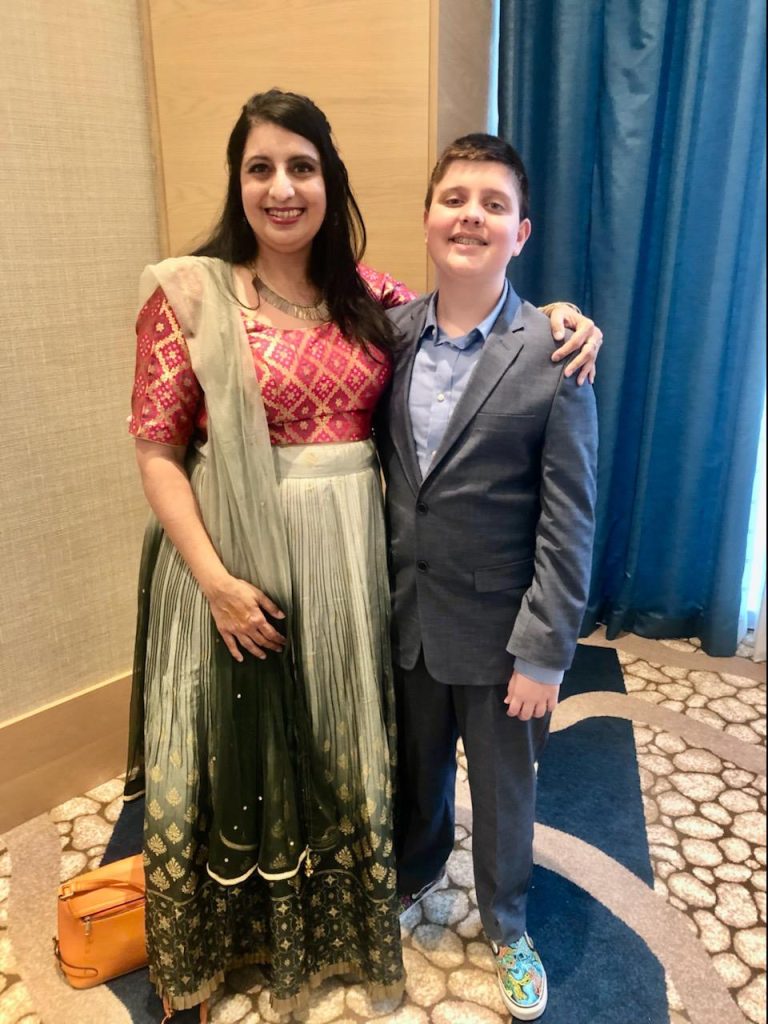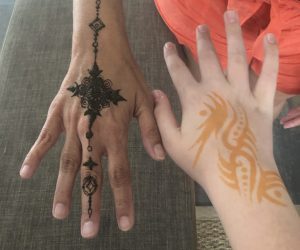Growing up, I never quite knew if I “counted” as an Asian American or Pacific Islander (AAPI). Pakistan seemed too far west of Asia and the farther east Asian countries typically discussed, but too far east of the Middle East, stuck in a no man’s land.

I remember excitedly and nervously sitting down to fill out my first standardized form as a 3rd grader and immediately agonized over which bubble to fill in for my nationality. My pencil hovered over the White/Caucasian, African, Asian, or Other bubbles–where did Pakistan fit in? There was no Middle East or Indian bubble (the ones I thought might fit best). Should I just lie and choose White? I wasn’t the only kid who thought this!
Where Did I Fit In?
In life I felt stuck in a no-man’s land as a half-Pakistani and half-White American. I look mostly White-presenting but with a name like Sameena Safdar, in a permanently tanned olive-skinned body under jet black hair, not so White-presenting to the Midwesterners I grew up around.
Every time someone met me, I inevitably heard “Where are you from?” and when I answered “St. Louis,” I knew the next question was, “No, I mean where are you really from? Like before here?”

Or the inevitable guesses among folks about my nationality–”Wait! Don’t tell me. You’re Italian! Or Greek!”–while I wanted to crawl into the floor and just wished fervently I had whiter skin so these conversations didn’t happen so often.
Growing up, I hated being different and tried to downplay anything different about me. I immediately corrected everyone that my name was Sam, not Sameena, and daydreamed about legally changing it to Samantha when I was old enough to do that. (Ironically, now I get annoyed when someone shortens my name to “Sam” and I immediately correct them.)
I’m ashamed now to remember how I used to cringe and quickly run to the car when my Pakistani aunt drove up to pick me up, so she wouldn’t get out of the car in her shalwar kameez and plastic slip-on sandals. A few kids had already made fun of my name and heritage, calling me Sameena “Safari” and asking if had ridden an elephant to school that day.
Growing Up Pakistani-American in the Midwest in the 1970s-1990s
The 70s, 80s, and 90s weren’t a great time to be Pakistani in the Midwest. Personally I didn’t face much outright discrimination, other than constantly feeling like an “Other” when asked where I was from or what kind of name Safdar was, though my family did receive threatening phone calls in 1985 when President Reagan bombed the Libyans.

My childhood took place before 9/11 and the anti-Muslim and anti-terrorist sentiment that vastly ramped up in its wake. My state only passed English-only and anti-Sharia laws in 2004. Even in the 70s and 80s though, Pakistan had a tenuous relationship with the United States in foreign policy, never quite hosting a reliable democracy like India. My family was so proud of being close to President Mohammed Ali Jinnah, the first ruler of the country of Pakistan, but I never saw a movie about him like Gandhi.
I worked at a Pakistani restaurant for 10 years during high school, college, and law school. I remember the owner telling me that Americans always had been so enamored with India, and not Pakistan, that most Pakistanis would designate their restaurants as “Indian” so Americans would come eat there. I couldn’t believe how distinct the food tasted to me. While were were all Punjabis, I would never mistake Pakistani food for Indian.
While I loved the Pakistani half of my family, I fervently wished I wasn’t Pakistani. As a small child I remember all I wanted was to be blonde, blue-eyed, and White, with the Dallas Cowboys cheerleaders seeming the epitome of the all-American look I longed for, even though I loved the Great American Melting Pot Schoolhouse Rock video and believed that’s what made the United States so special.
Of course, I never quite felt that I fit into the Pakistani scene in my city either, speaking little to no Urdu and easily recognizable at any Pakistani or Muslim event. There was a very small Pakistani community in my city, fairly insular.
You Can’t Be Authentic Wishing Away Half Your Identity
As I got older, I learned to embrace the Pakistani side of myself. It’s hard to feel authentic when you’re ignoring and hiding and wishing away half of your identity. I realized there was beauty in being different and relief and reclaimed energy in setting down your mask.
When I started law school, at orientation a woman asked my name and I said “Sameena–well, Sam is fine.” I’ll never forget though this lovely woman stopped, put a hand on my arm, smiled, and said “No, you don’t have to dumb it down for us. We can handle Sameena.”
Since that day, I’ve gone by Sameena professionally and personally. Once I got married, I took my new married last name and felt like the name Sameena Kluck seemed a little lost-could you even tell that I was half-Pakistani? Did it just sound like another unique first name?
When I had kids, they came out very white, blonde and blue-eyed (like their father), despite being one-quarter Pakistani. Sometimes I felt like I looked more like the nannies at the park (who were overwhelmingly Latino, Caribbean, and African in my neighborhood). My kids’ dad and I joked what it would have been like had we named our kids more traditional Pakistani names like Mohammed or Saira.

Flash forward to today. My kids go with me every year to Canadian Thanksgiving in Toronto, where my Pakistani aunt and her 3 children–and how their grown families-all reside. Thanksgivings often involve one regular turkey and one with Punjabi spices. My teenaged daughter eagerly learns all my auntie’s beauty secrets involving garam masala face washes, coconut oil hair masques, and more.

Two weeks ago I took my son (13 years old) to a Pakistani wedding, because he wanted to learn more about his culture and ethnicity and attend a walima. I happily wore a lehenga and taught my son how to assemble and eat pani puri. He even participated in our own mehndi and asked my cousin to paint henna on his hand.
But today, on the last day of AAPI Heritage Month, I realize that I don’t always feel a part of the larger AAPI community, especially since it’s taken me awhile to feel a part of the Pakistani community. While a month to recognize all those Americans of Asian and Pacific Island descent is nice, it tends to gloss over differences and distinctions of the more than 50 groups that make up this broad community. Each has their own experiences, own struggles, and own successes and we need to recognize that.
I am proud to be Pakistani-American, proud to pass that onto my children, and proud to be a member of the larger Asian American and Pacific Islander community.

